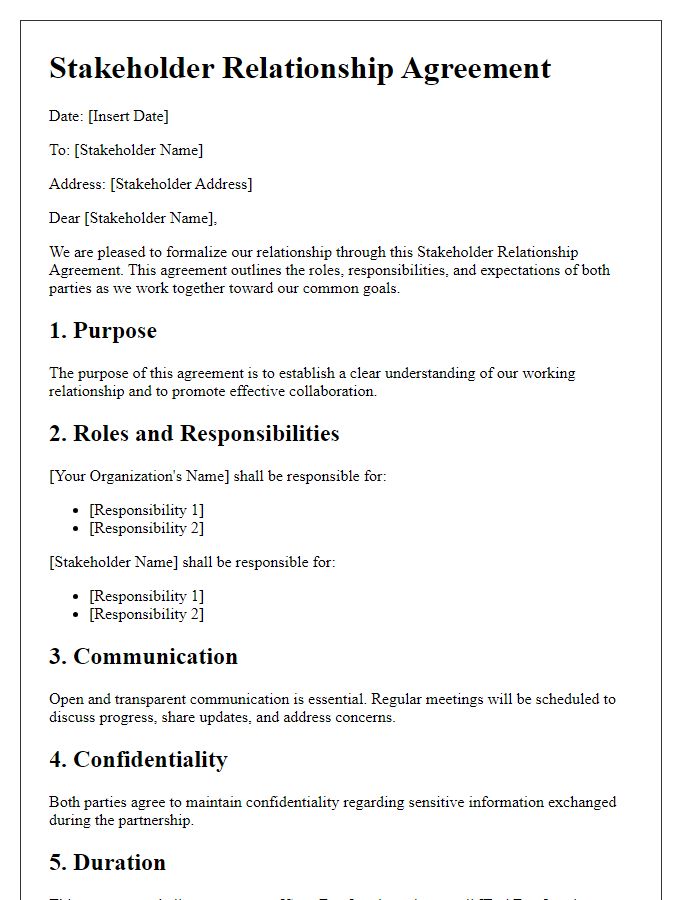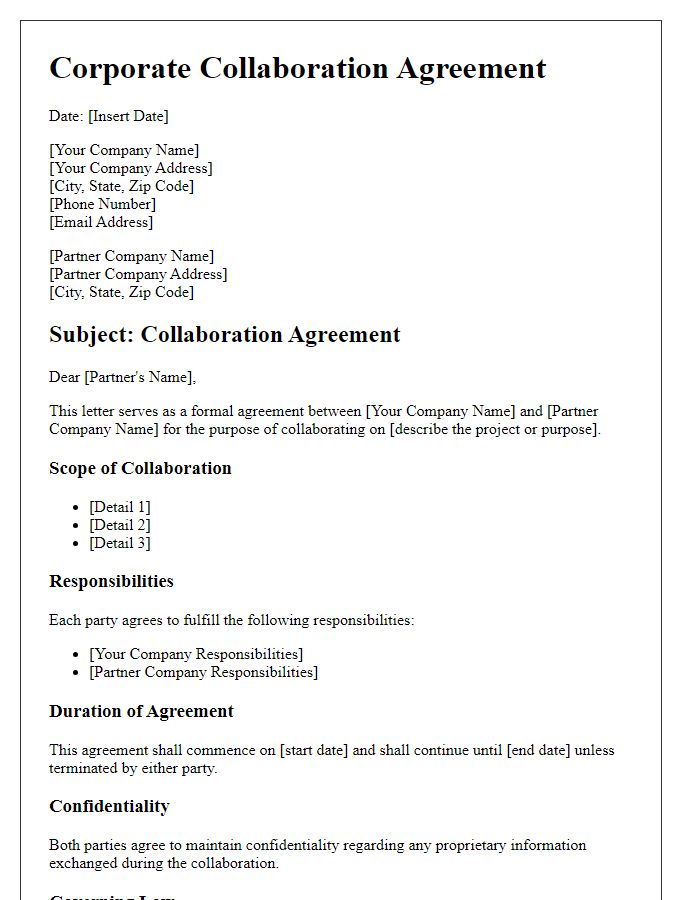Are you ready to forge strong partnerships that drive success? Writing a stakeholder collaboration agreement can be a game-changer for your project, ensuring everyone is aligned and committed. By clearly outlining responsibilities and expectations, you can pave the way for fruitful cooperation and mutual benefits. Let's delve deeper into the essential elements of crafting this critical document!

Purpose and Objectives
The purpose of the stakeholder collaboration agreement is to establish a formal framework for cooperation among diverse parties, including government entities, non-profit organizations, and private sector companies, aimed at achieving mutually agreed objectives. The objectives focus on enhancing project efficiency, leveraging shared resources, and aligning strategic goals to foster sustainable development initiatives. Specific aims include the creation of transparent communication channels between entities located in key project areas, such as urban communities or rural regions, promoting best practices in stakeholder engagement, and ensuring compliance with legal and regulatory standards. This collaborative approach will facilitate knowledge sharing, encourage innovation, and ultimately contribute to the successful execution of joint projects with measurable impacts on local economies and social well-being.
Roles and Responsibilities
Stakeholder collaboration agreements establish clear roles and responsibilities essential for project success. Each stakeholder, such as project managers, financial analysts, and community representatives, plays a vital role in the execution and oversight of initiatives. For instance, project managers coordinate tasks and ensure timelines are met, while financial analysts monitor budget compliance and resource allocation. Community representatives articulate local needs and concerns, fostering stakeholder engagement and ensuring transparency. Additionally, defining specific responsibilities, such as communication protocols and decision-making processes, mitigates risk and enhances collaboration effectiveness. Agreements might also outline reporting structures, timelines for deliverables, and conflict resolution mechanisms, thereby promoting accountability and streamlined operations.
Communication Channels
Effective communication channels are essential for stakeholder collaboration, particularly in complex projects involving multiple entities. Regular updates through email can enhance engagement, allowing stakeholders to receive timely information on project milestones and developments. Weekly virtual meetings can facilitate in-depth discussions and problem-solving among stakeholders, ensuring alignment on objectives and tasks. A shared digital platform, such as Slack or Microsoft Teams, enables continuous communication, file sharing, and real-time collaboration, fostering teamwork and transparency. Utilizing project management tools like Trello or Asana can track progress, assign tasks, and clarify deadlines, keeping everyone informed and accountable. Establishing clear guidelines for feedback and responses enhances the collaborative environment, allowing stakeholders to voice concerns and suggestions effectively.
Confidentiality and Data Protection
In a stakeholder collaboration agreement, confidentiality and data protection are critical elements that ensure sensitive information remains secure among parties involved. Such agreements often highlight adherence to legal frameworks like the General Data Protection Regulation (GDPR) in Europe, which outlines strict guidelines for handling personal data. The parties must clearly define the scope of shared information, detailing categories of data such as financial records, proprietary research findings, and personal identifiers. Moreover, specific measures for data encryption, secure data storage, and controlled access need to be articulated to minimize risks of breaches. The agreement should also outline protocols for data sharing, including communication channels used and limitations placed on third-party access. High-stakes environments, like healthcare or financial services, demand rigorous compliance, reinforcing the importance of establishing trust through effective confidentiality clauses protecting all stakeholders involved.
Evaluation and Review Process
The Evaluation and Review Process in stakeholder collaboration agreements entails a systematic approach to assessing project outcomes and stakeholder engagement. Regular assessments (quarterly or biannually) allow for evaluation of performance metrics, ensuring alignment with established goals. Stakeholders include local government bodies, community organizations, and private sector partners, each contributing unique perspectives and resources. Feedback collection methods such as surveys, interviews, and focus groups enhance understanding of stakeholder satisfaction and areas for improvement. Data analysis aids in identifying trends and informing decision-making processes. Additionally, progress reports, presented at stakeholder meetings, foster transparency and accountability. Timely evaluations, aligned with specific milestones, facilitate adaptive strategies, ensuring that the collaborative efforts yield meaningful results and meet stakeholder expectations effectively.























Comments